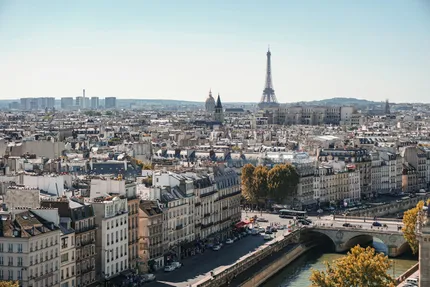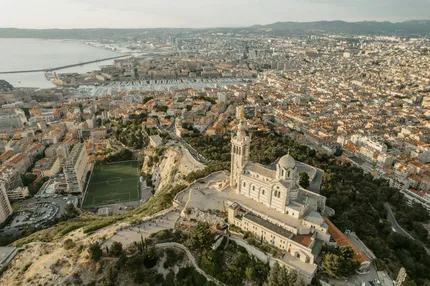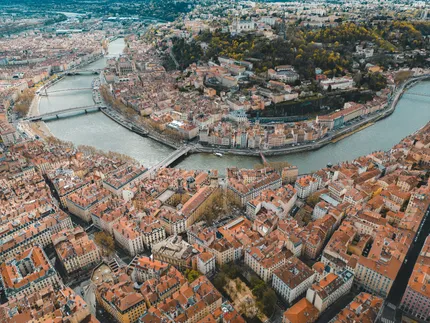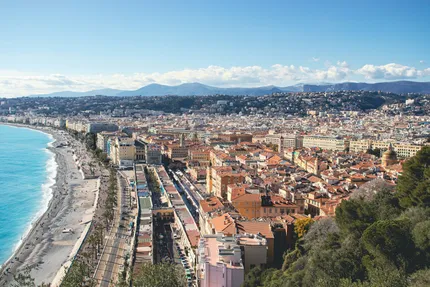CityTouring

City trip to Bordeaux
FranceBordeaux, often hailed as the "Wine Capital of the World," is a mesmerizing city located in the southwestern region of France. Known for its historic architecture, it's a treasure trove for those who enjoy exploring places with rich heritage and cultural significance. The city boasts the Port of the Moon, a UNESCO World Heritage site, and offers stunning 18th-century buildings that line the streets with elegance and charm. Bordeaux is not just for the architecture aficionado; it's also renowned for its vineyards. The surrounding countryside, drenched in viticultural legacy, invites visitors to take part in vineyard tours and wine tastings.
The charming squares, beautiful parks such as the Jardin Public, and the serene quays along the Garonne River, make it a delightful destination. This city successfully marries historic allure with contemporary urban life, featuring a vibrant gastronomic scene, with bistros and gourmet restaurants offering both traditional and innovative cuisine. Modern art and culture thrive here, with a host of galleries, museums, and regular cultural events, ensuring that visitors have a holistic and enriching experience.

Place de la Bourse
Place de la Bourse, a landmark in Bordeaux, France, is a stunning example of 18th-century neoclassical architecture. Overlooking the Garonne River, it forms a harmonious ensemble with the surrounding buildings. The iconic 'Miroir d'eau' in front reflects the square's grandeur, creating an enchanting experience for visitors, especially when illuminated at night. It's a central spot for cultural events and gatherings.

Cité du Vin
Cité du Vin in Bordeaux is a cultural facility dedicated to wine. It offers a unique journey through the world of wine featuring exhibitions, tastings, and workshops. The building’s modern architecture is itself a highlight, symbolizing the swirl of wine in a glass. Visitors can enjoy panoramic views of Bordeaux from the eighth-floor belvedere.

Saint-André Cathedral
Saint-André Cathedral in Bordeaux is a striking example of Gothic architecture, featuring ornate stone carvings and towering spires. The cathedral, a UNESCO World Heritage site, has hosted royal weddings, including the union of Eleanor of Aquitaine and Louis VII. Visitors can explore its intricate interior and climb the nearby Pey-Berland Tower for panoramic views of the city.
Bordeaux is a dream destination for wine lovers and history enthusiasts. Couples and solo travelers seeking a romantic or contemplative getaway will find immense joy here, particularly if they enjoy leisurely exploring vineyards or historic sites. Foodies will love the culinary scene that ranges from traditional French cuisine to innovative fusion. Culture enthusiasts will appreciate Bordeaux’s museums, galleries, and regular cultural performances, while shoppers can indulge in the city's elegant boutiques and waterfront markets.
Active travelers can venture slightly out to enjoy cycling tours through scenic vineyards. While Bordeaux may not cater extensively to families with young children seeking theme park or adrenaline-fueled adventures, it does have ample attractions to offer a serene and culturally enriching experience for groups and families interested in wine, food, and history. This makes Bordeaux a fitting choice for those looking to enjoy a sophisticated and sensory city break, laced with the allure of French charm and hospitality.
Three top reasons for a city trip to Bordeaux
- Explore the world's wine capital: tour Médoc and Saint-Émilion châteaux, taste classified growths, learn at La Cité du Vin, cycle wine routes, and experience harvest vendanges alongside knowledgeable local guides.
- Stroll Bordeaux's UNESCO-listed 18th-century center: gaze at Place de la Bourse and the Miroir d'eau, admire Grand Théâtre and limestone façades, wander Chartrons, and enjoy tram-linked quayside promenades along Garonne.
- Indulge in Bordelais gastronomy: browse Marché des Capucins, savor cannelés, entrecôte à la bordelaise, and Arcachon oysters, join food-and-wine pairing tours, and discover bistronomy in Saint-Pierre, Chartrons, and riverside hangars.

Best time to visit Bordeaux
The best time to visit Bordeaux is from May to October. During these months, the weather is warm and pleasant, making it ideal for vineyard tours and outdoor activities. The summer months, particularly June to August, are perfect if you enjoy longer days and lively events. September is especially popular among wine enthusiasts since this is the wine harvest season, offering an exciting time to witness viticultural activities. However, if you prefer fewer crowds and slightly cooler days, May and October are excellent choices, providing a balance of good weather and more tranquility in popular spots.
More activities and things to see in Bordeaux:
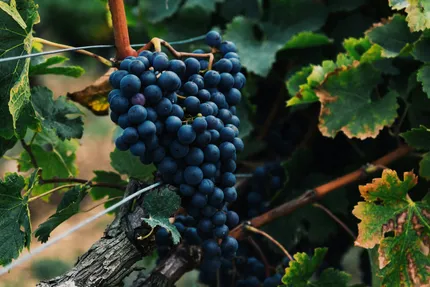
Bordeaux Wine Tours
Bordeaux Wine Tours offer a deep dive into the renowned wine region of Bordeaux, France. Guests can explore prestigious vineyards, learn about the wine-making process, and taste exquisite wines including local favorites like Merlot and Cabernet Sauvignon. Tours often include visits to both world-famous estates and lesser-known hidden gems, providing a comprehensive wine experience.
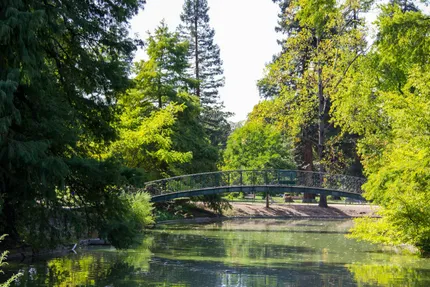
Jardin Public
Jardin Public in Bordeaux is a historic park established in 1746, offering a serene retreat with lush greenery, vibrant flowerbeds, and a tranquil lake. Spanning 10 hectares, the garden includes a children's playground, a library, and the Bordeaux Botanical Garden. Its elegant promenades and picturesque bridges make it a popular spot for leisurely strolls and picnics, embodying the charm of Bordeaux's cityscape.
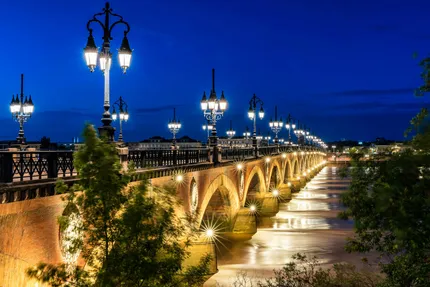
Pont de Pierre
The Pont de Pierre in Bordeaux is a historic stone bridge that crosses the Garonne River, connecting the city's left and right banks. Commissioned by Napoleon Bonaparte, it was completed in 1822, featuring 17 arches, symbolizing the letters in 'Napoleon Bonaparte.' It's a vital pedestrian and vehicle link, offering stunning views of the Bordeaux skyline and riverfront.
Grosse Cloche
The Grosse Cloche is one of Bordeaux's most iconic landmarks, dating back to the 15th century. This historic bell tower served as the city gate and is part of the remnants of the medieval fortifications. Its majestic bell, weighing around 7,750 kilograms, was used to mark important events. Visitors can admire its Gothic architecture and learn about Bordeaux’s history through guided tours.
Musée d'Aquitaine
The Musée d'Aquitaine in Bordeaux showcases a vast collection detailing the history of the Aquitaine region from prehistoric times to the present. Key exhibits include artifacts from the Roman period, intricate medieval objects, and insights into the colonial era, particularly focusing on Bordeaux's role in the triangular slave trade. This museum offers a comprehensive view of local heritage and cultural evolution over the centuries.
Les Bassins de Lumières
Les Bassins de Lumières in Bordeaux is a digital art center set in a former World War II submarine base. This immersive venue features large-scale projections of classical and contemporary artworks, transforming the vast, dark spaces into vibrant, colorful displays synchronized with music. It's a unique cultural experience that blends history and modern art technology seamlessly.
Rue Sainte-Catherine
Rue Sainte-Catherine in Bordeaux is one of Europe's longest pedestrian shopping streets, stretching over 1.2 kilometers. It's a bustling hub for shoppers, featuring a diverse array of international brands, local boutiques, cafes, and restaurants. The street links the historic Place de la Comédie with the lively Place de la Victoire, making it an essential visit for both shopping enthusiasts and culture seekers.
La Cité Frugès
La Cité Frugès in Bordeaux is a pioneering residential housing project designed by architect Le Corbusier in the 1920s. This UNESCO World Heritage site features 50 modernist homes showcasing innovative design elements, like flat roofs and open floor plans, aimed at providing efficient and affordable housing. The site represents a significant shift in urban planning and modern architecture.
Marché des Capucins
Marché des Capucins, often referred to as the 'belly of Bordeaux,' is a vibrant food market located in the city center. It offers a wide variety of fresh produce, regional specialties, seafood, meats, and cheeses. Frequented by locals and tourists, it's an excellent spot to experience Bordeaux's culinary culture, enjoy casual dining at food stalls, and purchase local ingredients.
Getting around in Bordeaux
Bordeaux is well-regarded for its accessibility and ease of navigation without a car. It offers a reliable and efficient public transportation system that includes trams and buses operated by Transports Bordeaux Métropole (TBM). The tram network is particularly extensive and serves most of the city's key areas. Bordeaux is also a very walkable city, with many attractions located within a reasonable distance from each other. Additionally, the city has made significant investments in cycling infrastructure, with numerous bike lanes and rental options like VCub bikes available throughout the area. For those looking to explore beyond the city center, regional trains provide convenient connections to nearby destinations like Arcachon and Saint-Émilion. Overall, Bordeaux is easy to navigate using a mix of public transport, walking, and cycling, making it accessible for visitors without needing a car.
Getting to Bordeaux
To reach Bordeaux, flying into Bordeaux-Mérignac Airport is the most straightforward option, as it is located just about 12 kilometers from the city center. The airport offers numerous European connections, including direct flights from cities like London, Amsterdam, and Madrid, as well as some transatlantic flights. From the airport, you can take a shuttle bus or a taxi to downtown Bordeaux. Alternatively, Bordeaux is well-connected by train, with frequent TGV high-speed services from Paris, which takes around two hours, making it a convenient option for those traveling from other parts of France or Europe. The main train station, Gare Saint-Jean, serves as an important hub. For those opting for long-distance buses, companies like FlixBus and BlaBlaBus offer regular connections to and from major European cities, providing another way to access this dynamic French city.
